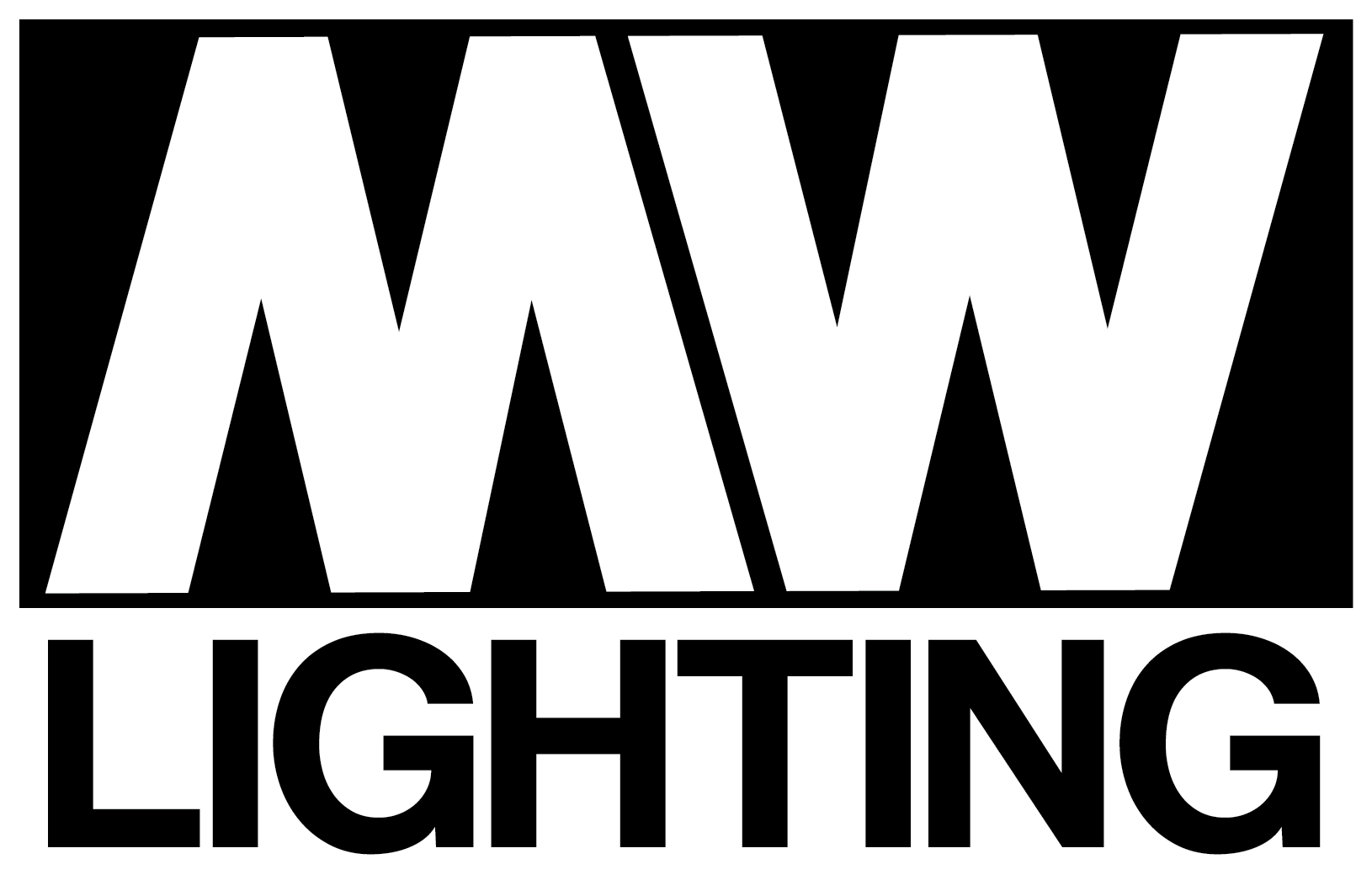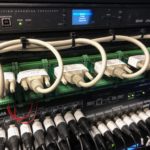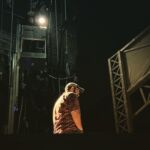Instagram Questions: Vol 1

When I first saw that Instagram had rolled out an “Ask Questions” feature, I rolled my eyes. But then I posted one and got lots of great lighting related questions. Here’s a compilation of the most interesting and most frequently asked ones. Lots of these could be entire posts themselves, which I’ll keep in mind going forward!
Enjoy!
“How did you get into lighting?”
– @SEBAZMED7
I have a few memories of being enamored with lighting and technical theatre in general. The first one was seeing a national tour of CATS at the Straz Center (then The Tampa Bay Performing Arts Center) when I was in probably 1st or 2nd grade. I remember very vividly when Mr. Mistoffelees used his hands to “change” the iris and shutter of his followspot. I remember being a singer in the Tampa Bay Children’s Chorus and sitting backstage watching the cyc lights change.
I really “started” in technical theatre in the 5th grade. I went to a small Catholic school in Brandon, FL and had just joined the choir. I asked if I could run the sound board, which at the time was a Mackie SR32. I did that for every school mass and every choral performance and eventually started mixing for the LifeTeen band on Sunday nights. There weren’t really any lights there – it was nothing like these megachurches with larger rigs than Broadway… but every Christmas we did a pageant and Steve Fabian used to bring in some lighting trees and par cans. I was quickly hooked.
When I went to high school, I was excited to find out that my technical theatre mentor from middle school, Steve, had children there and frequently volunteered to do lights for the showchoir. I quickly started learning everything I could about the lighting board (a Colortran Encore 24) and started running just about every event, meeting, concert, and show in the theatre with my friends Ryan, Max, and Jason. I started doing shows at other schools (I did sound for a production of Grease with a VERY young Taylor Trensch as doody,) started going to my local rental house (SEAL,) and soaked in everything I possibly could with lighting. I volunteered my summers with a youth theatre company and did everything from lights to sound to scenery.
My junior year of high school I was given a small budget by my theatre teacher, Ed Mason. I rented some Colorram II scrollers and a few Source Fours for a production of Bye Bye Birdie and I spent HOURS working on it. It wasn’t very good. At all.
Then in my senior year, we fundraised and fundraised and raised enough money to do a rental package for a big production of The Wizard of Oz – we had a huge rig of… wait for it… Mac 250 Entours and Studio Spot 250s. I was in heaven.
All of this time I never really gave much thought to “what was next.” I just kinda enjoyed the ride. Before I knew it, it was time to apply for colleges. I honestly didn’t give it much thought. I ended up going to my local university and got my BA in Theatre there. I’ll write an entire post one day about my experience in school and my advice for other people… but not today.
Meanwhile, some of my friends and I had started a very small production company doing a little bit of everything around the west central Florida area. Lots of weddings and corporate parties and lots of shows for schools around the area. Looking back on it, it was completely unsustainable and we had no idea what we were really doing at the time – but it was sure fun and I learned a LOT.
So I guess that kinda sums up my journey INTO the world of technical theatre and lighting, but not much of what happened since then. That’ll be another post one day.
“Why lighting?”
– @_ABBYMAY_
My favorite thing about lighting is how it’s a balance between art, science, and technology. I love being able to use both sides of the brain at once to solve a creative problem.
I also love that it’s one of the most non-obvious design elements there is. I love being able to shape a mood or feeling using something as simple as color temperature. People don’t often notice light in their every day life, but it’s everywhere.
I like lighting musicals because I enjoy making the lighting another character in the show. It dances, it plays music, it evokes feelings. I enjoy being able to change the mood of a moment instantly with the change of a color or the change of an angle.
I also just love problem solving. Technical theatre and lighting in general are all about problem solving. How are we going to do X when we only have Y to accomplish it? There’s logistics and paperwork and math… I love it.
“When everything is not working and all hope is lost, how do you find composure during hectic tech weeks?”
– @SEBAZMED7
Well, I don’t know that I’ve ever been in a tech where everything is not working, so I’d wonder what larger problems were at play – but I’ve had a few hectic tech experiences for sure.
I think the key thing to remember for everyone is that we’re not performing brain surgery. We’re putting on a show. I’m not saying to not take the work seriously – but for me it’s really important to remember to put things in perspective. I try to always make the tech experience as fun as possible for everyone. We always have candy at the lighting table. We do theme days. This past year in the park we hosted a Smore’s night where you could come to the table and make yourself a smore – complete with a little burner to toast it on. Last year when Ryan and I were working in Colorado, we got more and more ridiculous every day with our tech table offerings. It started with candy and ended up with a slice your own cheese and cracker spread. The only thing we needed was little wine cups.
If you’re not having fun, why are you doing this? This work can suck. The hours are long, the work is difficult – so if you’re not loving it and not having fun, why are you doing this? That’s a question that I think needs to be asked of a lot of very bitter and grumpy people in our business.
Finally, it’s important to take care of yourself mentally and physically. You turning yourself into a martyr for the show doesn’t impress me at all. Go home and sleep so you can be useful. Get up from the table as often as possible. Stand at least a little every hour, even if you remain on com and at the table. Go outside and get some sun/fresh air during breaks. Bring healthy snacks and not just chips. DRINK A LOT OF WATER.
If you can’t make it home or to housing during the break of a 10 of 12, bring yourself a change of socks. It’ll make you feel like a new person for the second half.
If you’re a student, stay off your phone. Be in the room, be at the table. Pay attention to what’s happening. You can always be learning.
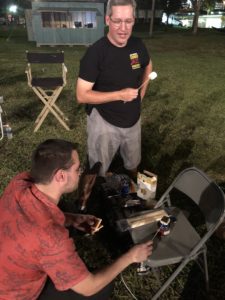
“What do you look for in a good team?”
– @ISAAC.ANDERSON_
The biggest universal thing I look for in anyone that I work with is that they’re a fun and interesting person to be around. I’m often about to spend 40+ hours in close proximity with these people – I need to like them. I want to be able to go out for a drink after a long tech day with them. I want to be able to talk about hockey with them. I want to be able to not talk about lighting with them sometimes. You’ve gotta be with people who “get” each other.
I know that you probably want a more practical skills based answer:
Associates / Assistants:
– Fluent in Vectorworks / Lightwright
– Ability to manage various types of people that you might find on a crew
– Very high computer proficiency in things like Office, Adobe CC, and basic everyday tasks like Dropbox, Google Drive, etc. Watching people use their computers inefficiently drives me nuts.
– Take the initiative to knock out notes as soon as possible. My best associates are the ones that I can give a note to and then never have to think about it again.
– Know when something is important enough to ask me about or when it’s something you can take care of yourself.
Programmers:
– KNOW. THE. DESK.
– Use best practices and industry standards to create a clean showfile that someone else can understand if we need to use it again in 4 years and you’re not available.
– Ability to adapt to different styles of communication and workflow
– KNOW. THE. DESK.
– Have your own tools (effects, macros, etc) already built for the show
– Be an artist yourself. Know what the rig can do and help me create.
– KNOW. THE. DESK.
Student Interns
I always try to bring on one or two student interns when I work on a show. These are true interns and not unpaid crew members. Let me explain: I didn’t get many opportunities to observe a professional show in tech when I was in school. And by “many” I mean I had about 0 opportunities. I feel a duty to be the person that I needed when I was younger and this is how I like to make that happen. If you’re trying to decide if you want to do this with your life, but you’ve only had educational experiences and have never seen a real-world process, how are you supposed to make an informed decision?
If you’re one of these student interns, you will never be asked (nor will you be permitted) to do the work of the production crew or of the design team. I have a huge problem with theatre companies using “internships” as a way to exploit young people into giving them virtually free labor in return for “opportunities” and “exposure” and I’ve committed to never doing that. I truly want to give young people the opportunity to observe, learn, and ask questions.
If you’re interested in coming out to observe, you can look for those spots on the “work with us” page. I typically like to have college/university students or 11th/12th grade students who are interested in a career in theatrical lighting.
I don’t typically get any say in the following positions, but here’s a few observations:
Production Electricians:
– Understand how loads are calculated (You’d be surprised…)
– Know how to manage time and people well.
– Spot problems with the rig/plot before load in
– COMMUNICATION
– Knowledge of equipment/technology. MODERN equipment/technology including network systems and troubleshooting.
“How does your paperwork portal help with your workflow?”
– @JOELRLB
I like having all of the necessary information for a show in one place. I was continually frustrated by the commercially available products out there and decided to make something myself. I first started on this project back in 2014 – I knew nothing about database design or FileMaker in general. I sat in a Panera in Sarasota while on breaks from a show and wrote what would become the first version of the PMP. It only did focus charts and there was no real user interface. It was horrible.
I kept learning and teaching myself and in 2015 I rolled out the first real version of what has now become the Paperwork Management Portal. It was still riddled with bugs and bad code, but each show it got better and more efficient. Each show brought new features (and new problems.)
Now I use it on everything. It does my lighting paperwork, it does notes, it does cue sheets, it talks to the EOS, it does followspot sheets, it does labels, it can iMessage people worknotes. Here’s a little overview of lots of the key features (though the manual is incomplete)
I get a few requests a week from people to use it on their shows. There’s a few reasons why I still don’t really allow it out into the wild. The biggest one is that there are still lots of little quirks to it that are a result of me creating it before I really had any idea what I was doing. At various points, I should have scrapped the project and started over but I didn’t. What that means is that there’s lots of not super efficient code making up the BASE of the system. I’m slowly but surely fixing this, but it takes lots of time.
Time is the other key. I don’t have time to do full-time support of something that isn’t really a complete product. Typically if someone is using the program, they’re on a show site or in tech, so time is key. If there’s a bug, they sometimes can’t wait a day or two to get it fixed and I’m not always available to fix it. Because of that, I have a very small pool of people who are actively using the program for their projects who know the quirks and can provide feedback to me and they’re all people that I know and who I don’t mind getting up at 2am and logging into the server for.
There’s also the issue of money – I don’t feel comfortable charging someone for what is basically a little side project and isn’t fully tested or optimized software, but it also takes money to run the server. If I started opening it up to more people, I would need to move to AWS for hosting and the server license would get more expensive. It’s a cycle of problems. I do have a little donate via paypal button on the main screen but no one ever uses it. I think that eventually I’ll offer it as a show by show license kind of thing like SpotTrack.
That being said, I have been making some other solutions for people here and there based on some of the core features of PMP. I made Jessica Creager a self-contained little focus photo tool which was used on the Broadway production of Margaritaville, and I’m considering making a standalone followspot cue tracking system. Time is, again, the key.
“What show do you REALLY want to light?”
– @BLAKETHEATER
Any show that you’ll hire me for!
But at the top of the list (some are repeats:)
Hair
Matilda
Bloody Bloody Andrew Jackson
Passing Strange
Spring Awakening
The Burnt Part Boys
Curious Incident
“How do you pick the gear, color, etc?”
– @ISAAC.ANDERSON_
I know it’s a cop-out answer but “it depends…”
Typically everything comes down to this question – “What can I get for this budget in order to best fulfill the needs of this project?”
In most of the theatres that I am working in, there’s a fixed inventory of available gear so I don’t get much choice other than that list. If there’s a rental budget, great! If not, I’ll use what’s there. Picking color is a totally different story.
The first thing that influences my color decisions is the equipment that I’m using. Do I have lots of LEDs? Do I have all Source Fours? Is there a mix of old 360qs next to brand new 750w HPLs?
I have a few go-to colors that I use a lot for general front/box light. L201, L202, L203. R02, R302, R54, R55, L161, R08. But it really varies from show to show. I almost always have an L71 balcony rail fill if it’s a musical. I’m a huge fan of uncorrected white arc sources cutting through deep saturated colors.
To pick color I sit in my office with a plethora of swatch books and start playing around. I have a couple S4 Minis that I can plug in and put swatches in front of. I like to take all the colors I’m using and put them out on the table at once. I also like to trust my first instinct when it comes to color and try not to second guess myself. I’ve only had to change colors in a full system a couple times.
Picking gobos has always been hard for me. Using Capture as a visualizer has actually helped a lot with this because I can throw them in a fixture and play with the focus and see how they tile together. Even if I’m not visualizing an entire rig, sometimes I’ll just put a fixture in and look at different gobos.
“How do you approach lighting scenery?”
– @LIGHTNINGBUGCALLIGRAPHY
Angle and texture are key. You want to make sure the angle you’re using can 1) allow you a wide enough shot to cover the entire thing you’re trying to light and 2) at an angle that will allow you to avoid hitting actors (and other scenic objects) and creating unwanted shadows on the scenery.
If you have nothing else, throw in a soft breakup with N/C and throw it on that scenery. My go-to is G579 (It’s just a little personal thing, but I try to put at least 1 G579 in every show I do). Give it something. A mistake I made early early on in my career was focusing so much on the stage and the people and forgetting about the scenery – especially tall walls.
I did a lot of scenery lighting on Doublewide at Florida Studio Theatre last summer. There were instruments literally focused across a 2×3 roofline to be able to make it glow.
I like to do some split colors when doing scenic fill textures – especially with outdoor stuff.
You want to enhance the paint colors without changing them, and sometimes you’re also tasked with “hiding” imperfections. Texture helps with hiding lots of things!
“Favorite Color Combinations?”
– @VANRENSBDESIGNS
They’re all great! But I’m mostly a sucker for deep deep blues and indigos. L71 is my go-to indigo/congo fill. I love combining deep indigo with just about everything, especially red and cyan.
I also have a particular love for Green/Magenta combinations.
Here are some of my go-to color effects
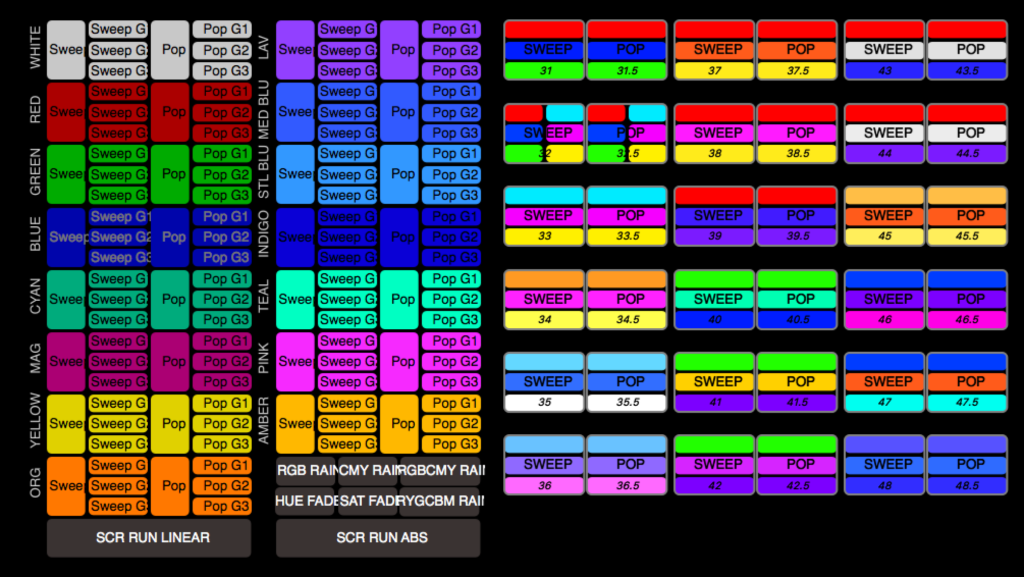
“Thoughts on LEDs?”
– @VANRENSBDESIGNS
I love them. I’ve totally embraced them. There are differences, sure. That doesn’t make them bad. I think the big problem with LEDs is people not understanding what the limitations are depending on the type of LED that you’re using. Using a generic Chinese RGB led for $25 from Monoprice is going to be way different than using a RGBW Led for $400 from Chauvet which is going to be way different than using an $1,800 x7 ETC Series 2 LED.
There are so many reasons for the differences and those reasons could be their own post alone, but I’ll summarize the key points for me:
- Dimming Curve / Amber Shift
- Total # of Color Emitters (RGB might work great for a cyc but is shit on skin)
- Color Separation
- Power/Data requirements
I often get emails from people who are asking for advice on purchasing LEDs for their spaces. Here’s a few things to think of when evaluating if you should go down that road:
- Power – You’ll need hot power which could mean totally new infrastructure or at least changing some dimmer modules to be relays and changing some connectors.
- Data – Do you have a distributed data system in your space? You’ll need data everywhere you want to put an LED… and no, you can’t just put in 10 ShowBaby receivers and call it a day.
- Cable – Do you have enough power and data cable to use these instruments? (Side note, I am a CBI dealer so if you need cables of any kind, hit me up!)
- Lenses – are you looking at wash lights? Make sure to budget for a variety of lenses that your designers might want to use.
My go-tos:
LED Profile Units:
- ETC Series 2 LED Lustr – There’s really no comparison
- ETC Colorsource Spot
LED Wash Units:
LED CYC/Strip Units:
“Favorite desk to work on?”
– @JASONCARRICK_
99% of my shows nowadays are on the ETC Eos Family of consoles. I have an ION at home as well as several nomad systems and my custom FileMaker-based paperwork system talks directly to the Eos software.
The first computer console that I learned to program on in high school was the Colortran Encore 24. The go button took so much force to push that it felt like you were firing a missile, and the level wheel was as thick as a hockey puck. It’s sad, actually – I found out several years after graduating that my old school was upgrading to an Element and the old Encore went into surplus to be auctioned. I tried hard to find it and get it for the $50 I’m sure someone paid for it, but I couldn’t find it. I wanted the GO button as a little keepsake on my shelf. If anyone is looking for a gift idea for me and wants to get me an Encore 24…
At one point in time I was fluent in Hog II and Hog III, but it would take me a while to get back up to speed on those. I was also one of the dozen or so people who used the Martin Maxxyz when it was out. I still think that nothing beats those trackbelts. Unfortunately I had the choice to learn the Maxxyz or the MA and I chose the Maxxyz – in retrospect, not the best choice.
I also have spent countless hours on the Express/Expression line from ETC, as just about all of us have. Sometimes I miss those clicky keys on the Expression. I get flashbacks to college every time I hear one.
mikewoodld
